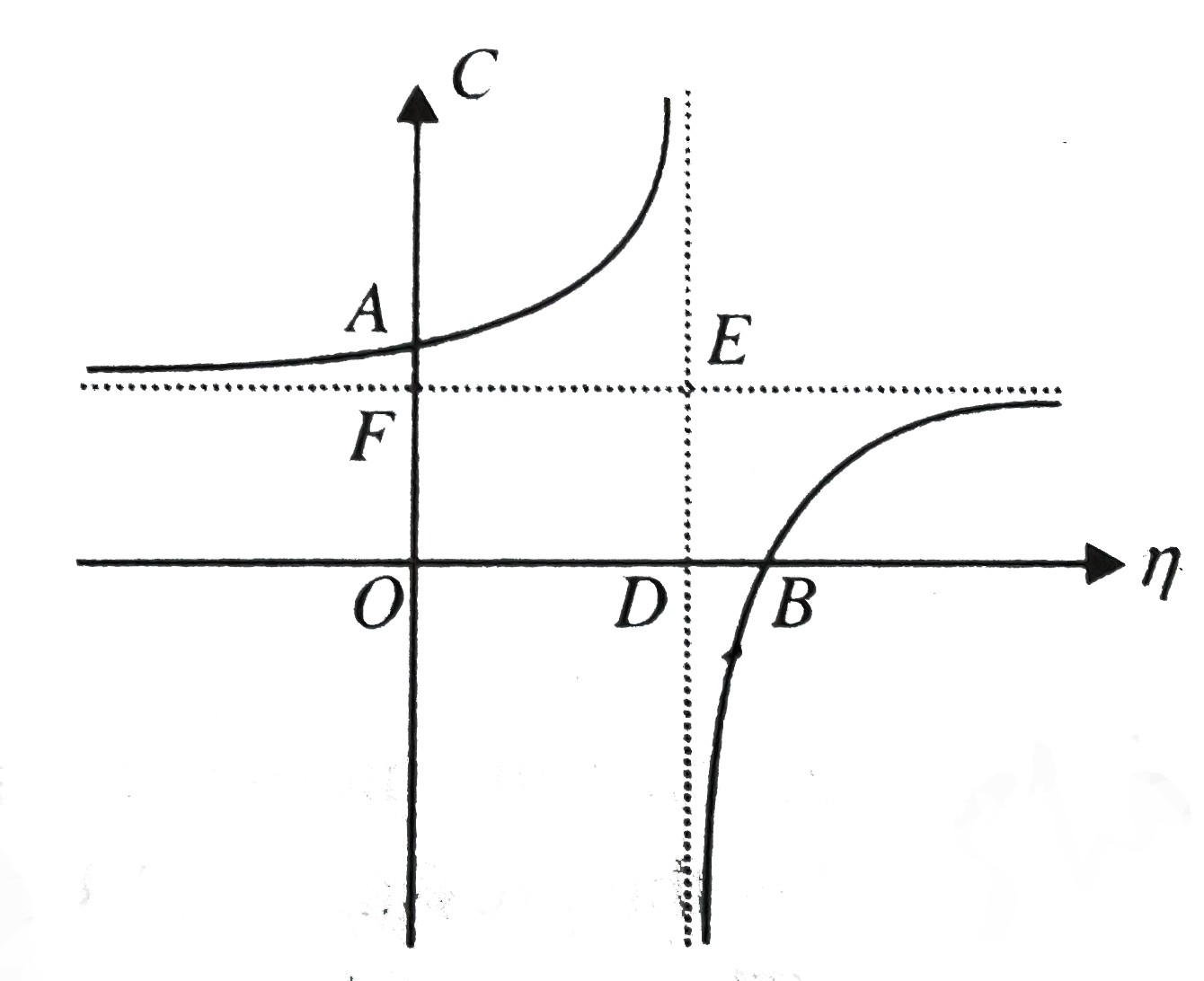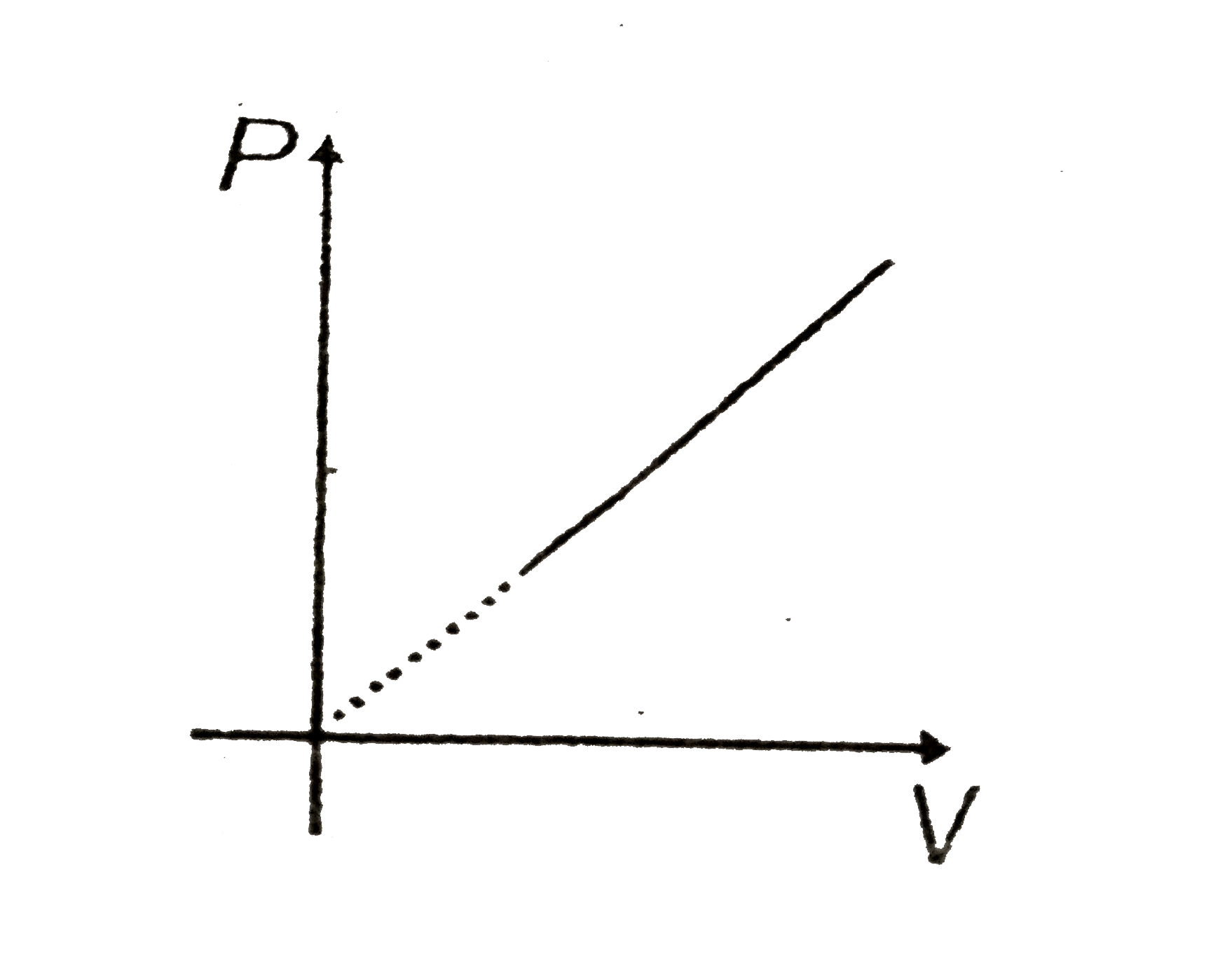Find the molar specific heat of the process for a monoatomic gas, a being constant.
The correct Answer is:B
To find the molar specific heat of the process defined by P=aT for a monoatomic gas, we can follow these steps:
1. Understanding the Process:
The given process can be rewritten as P⋅T=a, which implies that P and T are inversely related. This is a characteristic of an isothermal-like process but with a specific relationship.
2. Using the Ideal Gas Law:
We know from the ideal gas law that PV=nRT. We can express T in terms of P and V:
T=PVnR
3. Rearranging the Equation:
Substituting T into the equation P⋅T=a:
P⋅(PVnR)=a
This simplifies to:
P2VnR=a⇒P2V=a⋅nR
4. Identifying the Form:
We can express this in a standard form PVx=constant. From the equation P2V=constant, we see that:
x=2
5. Finding the Value of Gamma:
For a monoatomic gas, the value of γ (the heat capacity ratio) is:
γ=CpCv=53
6. Using the Formula for Molar Heat Capacity:
The molar heat capacity Cm can be calculated using the formula:
Cm=Rγ−1−Rx−1
Substituting the values of γ and x:
Cm=R53−1−R2−1
7. Calculating Each Term:
- The first term:
R53−1=R23=3R2
- The second term:
R2−1=R
8. Combining the Results:
Now, substituting back into the equation for Cm:
Cm=3R2−R=3R2−2R2=R2
9. Final Result:
Therefore, the molar specific heat for the process P=aT for a monoatomic gas is:
Cm=7R2
The given process can be rewritten as P⋅T=a, which implies that P and T are inversely related. This is a characteristic of an isothermal-like process but with a specific relationship.
We know from the ideal gas law that PV=nRT. We can express T in terms of P and V:
T=PVnR
Substituting T into the equation P⋅T=a:
P⋅(PVnR)=a
This simplifies to:
P2VnR=a⇒P2V=a⋅nR
We can express this in a standard form PVx=constant. From the equation P2V=constant, we see that:
x=2
For a monoatomic gas, the value of γ (the heat capacity ratio) is:
γ=CpCv=53
The molar heat capacity Cm can be calculated using the formula:
Cm=Rγ−1−Rx−1
Substituting the values of γ and x:
Cm=R53−1−R2−1
- The first term:
R53−1=R23=3R2
- The second term:
R2−1=R
Now, substituting back into the equation for Cm:
Cm=3R2−R=3R2−2R2=R2
Therefore, the molar specific heat for the process P=aT for a monoatomic gas is:
Cm=7R2
Topper's Solved these Questions
- BOOK - DC PANDEY ENGLISHCHAPTER - LAWS OF THERMODYNAMICSEXERCISE - Exercise 21.11videos
LAWS OF THERMODYNAMICS
- BOOK - DC PANDEY ENGLISHCHAPTER - LAWS OF THERMODYNAMICSEXERCISE - Exercise 21.27videos
LAWS OF THERMODYNAMICS
- BOOK - DC PANDEY ENGLISHCHAPTER - LAWS OF THERMODYNAMICSEXERCISE - Example Type 31videos
LAWS OF THERMODYNAMICS
- BOOK - DC PANDEY ENGLISHCHAPTER - LAWS OF MOTIONEXERCISE - Medical entrances gallery39videos
LAWS OF MOTION
- BOOK - DC PANDEY ENGLISHCHAPTER - MAGNETIC EFFECT OF CURRENT AND MAGNETISMEXERCISE - Integer type Questions10videos
MAGNETIC EFFECT OF CURRENT AND MAGNETISM
Similar Questions
Graph for specific heat at constant volume for a monoatomic gas
View SolutionGraph for specific heat at constant volume for a monoatomic gas
View SolutionA process in which work perfomed by an ideal gas is proportional to the corresponding increment of its internal energy is described as a polytropic process. If we represent work done by a ppolytropic process by W and increase in internal energy as ΔU then
W∝ΔU
or W=K1ΔU ...(i)
For this process, it can be demonstrated that the relation between pressure and volume is given by the equation
PVη=K2 (constant ) .....(ii)
We know that a gas can have various values for molar specific heats. The molar specific heat 'C' for an ideal gas in polytropic process can be calculated with the help of first law of thermodynamics. In polytropic process process the variation of molar specific heat 'C' with η for a monatomic gas is plotted as in the graph shown.

For a monoatomic gas, the values of polytropic constant η for which value specific heat is negative.View SolutionThe molar specific heat at constant volume, for a non linear triatomic gas is
View SolutionAn ideal gas is made to undergo a process T=T0eαV where T0 and α are constants. Find the molar specific heat capacity of the gas in the process if its molar specific heat capacity at constant volume is Cv. Express your answer as a function of volume (V).
View SolutionIf the molar specific heat at constant pressure for a polyatomic non-linear gas is x and the molar specific heat at constant volume for a diatomic gas is y, find the value of x/y.
View SolutionThe molar specific heat of the process VαT4 for CH4 gas at room temperature is :-
View SolutionAn ideal monatomic gas undergoes a process where its pressure is inversely proportional to its temperature.
(a) Calculate the molar specific heat of the process.
(b) Find the work done by two moles of gas if the temperature change from T1 to T2.View SolutionThe variation of pressure versus volume is shown in the figure. The gas is diatomic and the molar specific heat capacity for the process is found to xR. Find the value of x.
 .View Solution
.View SolutionCvandCp denote the molar specific heat capacities of a gas at constant volume and constant pressure, respectively. Then
View Solution

